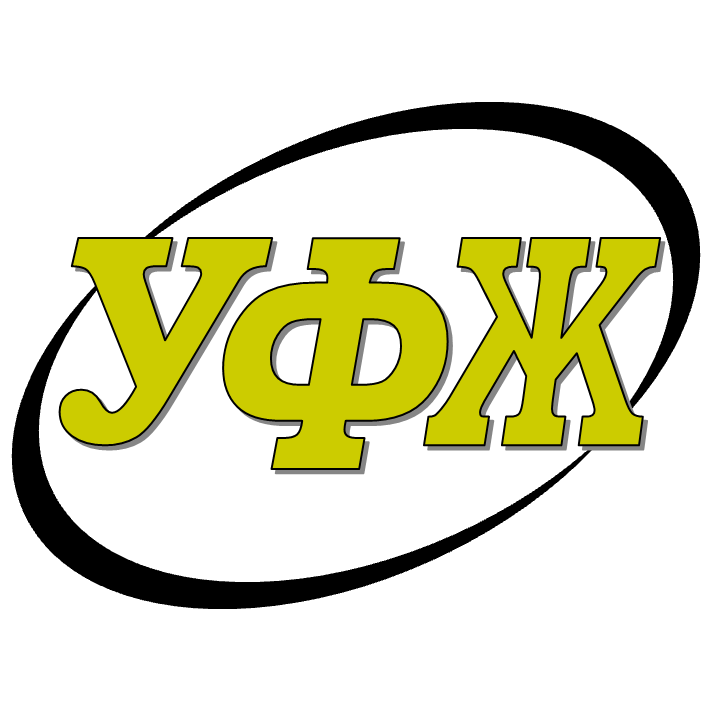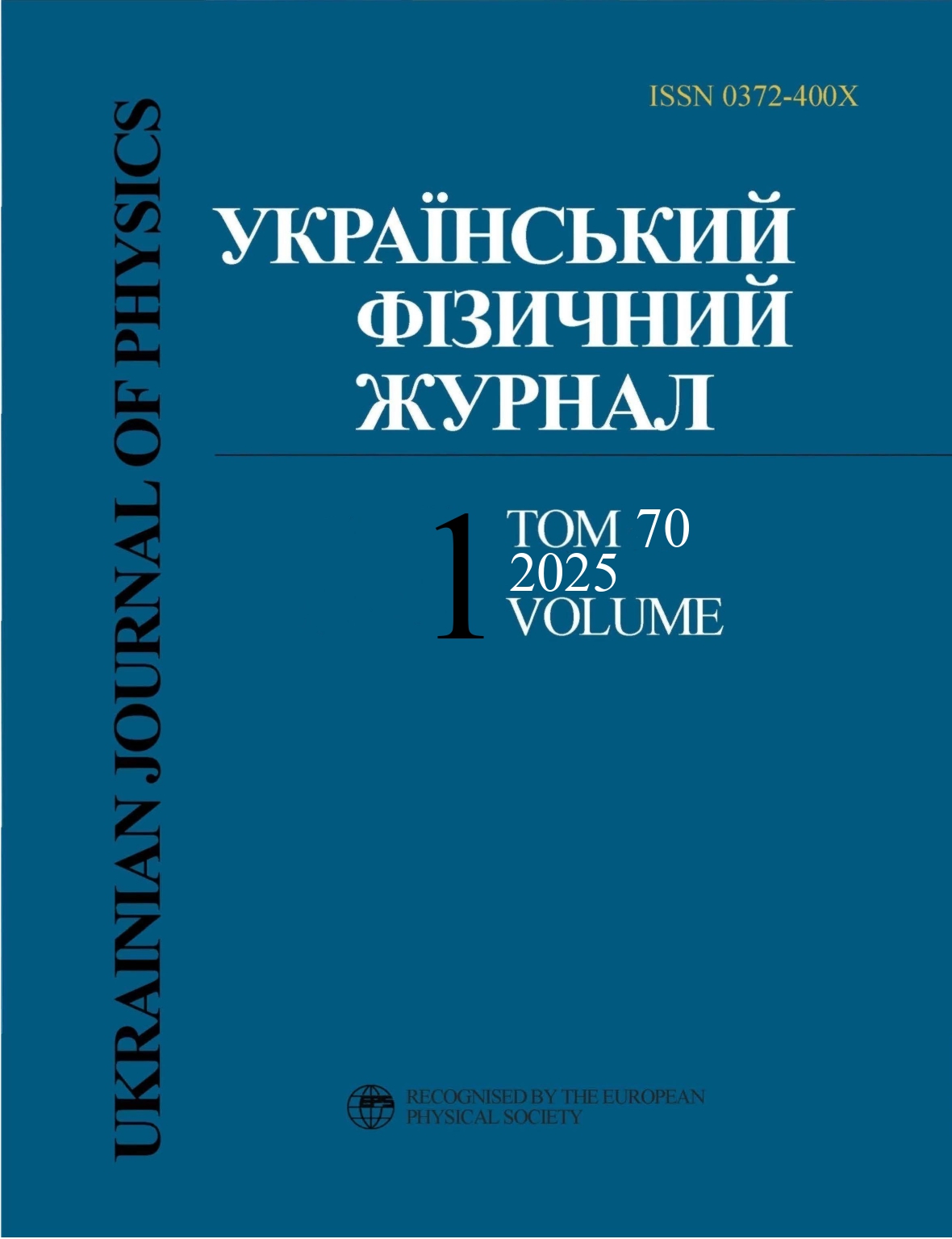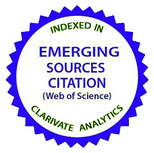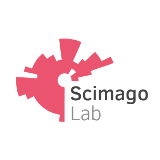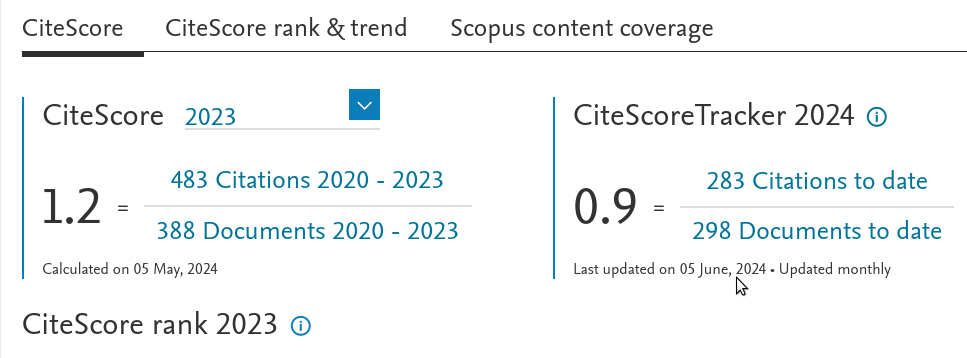Моделювання механізмів транспорту носіїв заряду в HgCdTe та InSb фотодіодах на ділянку спектра 3–5 мкм
DOI:
https://doi.org/10.15407/ujpe70.1.56Ключові слова:
IЧ фотодiоди, HgCdTe, InSb, механiзми транспорту носiїв заряду, моделювання темнового струмуАнотація
Важливою проблемою для HgCdTe та InSb фотодiодiв є надлишковий темновий струм, який домiнує при робочих напругах зворотного змiщення i перевищує генерацiйно-рекомбiнацiйний струм в областi просторового заряду (ОПЗ). Як правило, надлишковий струм має об’ємну та поверхневу складову i зумовлює низькочастотний шум 1/f -типу, який впливає на амперватну чутливiсть та виявлювальну здатнiсть фотодiодiв. У бiльшостi виконаних дослiджень вiдзначається тунельна природа надлишкового струму i зв’язок з технологiєю виготовлення вихiдних матерiалiв та фотодiодiв. З використанням теоретичних моделей виконано розрахунки темнового струму, якi спiвставленi з експериментальними результатами, отриманими iз дослiджень фотодiодiв на основi епiтаксiйних плiвок p-Hg1−xCdxTe (x ∼ 0,3) та монокристалiв n-InSb. Зроблено висновки про те, що структура чутливої областi у фотодiодах, виготовлених методами iонної iмплантацiї та дифузiї, бiльш складна, нiж у iснуючих моделях, тому останнi можна використати як перше наближення для якiсного i кiлькiсного пояснення експериментальних результатiв.
Посилання
A. Rogalski. Infrared Detectors. 2nd edition (CRC Press, Taylor and Francis Group, 2011).
https://doi.org/10.1201/b10319
X. Lyu. Recent progress on infrared detectors: materials and applications. Highlights Sci. Eng. Technol. 27, 191 (2022).
https://doi.org/10.54097/hset.v27i.3747
A. Rogalski, M. Kopytko, F. Dai, R. Jiang, F. Wang, W. Hu, P. Martyniuk. Infrared HOT material systems vs. law 19 paradigm. Measurement 230, 114495 (2024).
https://doi.org/10.1016/j.measurement.2024.114495
A Sher, M.A. Berding, M. van Schilfgaarde, An-Ban Chen. HgCdTe status review with emphasis on correlations, native defects and diffusion. Semicond. Sci. Technol. 6, 59 (1991).
https://doi.org/10.1088/0268-1242/6/12C/012
Mercury Cadmium Telluride: Growth, Properties and Applications. Edited by P. Capper and J. Garland (Wiley, 2011).
Z. Tsybrii, Yu. Bezsmolnyy, K. Svezhentsova et al. HgCdTe/CdZnTe LPE epitaxial layers: from material growth to applications in devices. J. Cryst. Growth 529, 125295 (2020).
https://doi.org/10.1016/j.jcrysgro.2019.125295
A. Sukach, V. Tetyorkin, A. Voroschenko, A. Tkachuk et al. Carrier transport mechanisms in InSb diffused p-n functions, SPQEO 17, 325 (2014).
https://doi.org/10.15407/spqeo17.04.325
V. Tetyorkin, Z. Tsybrii, A. Tkachuk, M. Vuichyk, K. Svezhentsova, A. Yevmenova, N. Dmytruk. Passivation of InSb and HgCdTe infrared photodiodes by polycrystalline CdTe. J. Electron. Mater. 52, 7337 (2023).
https://doi.org/10.1007/s11664-023-10671-9
M. Vallone, M.G.C. Alasio, A. Tibaldi, F. Bertazzi, S. Hanna, A. Wegmann, D. Eich, H. Figgemeier, G. Ghione, M. Goano. Exploring optimal dark current design in HgCdTe infrared barrier detectors: a TCAD and semianalytic investigation. IEEE Photon. J. 16, 6800208 (2024).
https://doi.org/10.1109/JPHOT.2023.3345544
W. Shockley, W.T. Read Jr. Statistics of the recombination of holes and electrons. Phys. Rev. 87, 835 (1952).
https://doi.org/10.1103/PhysRev.87.835
S. M. Sze. Physics of Semiconductors Devices. 2nd edition (Wiley, 1981).
C.T. Sah, R.N. Noyce, W. Shockley. Carrier generation and recombination in p-n junctions and p-n junction characteristics. Proc. IRE 45, 1228 (1957).
https://doi.org/10.1109/JRPROC.1957.278528
V. Tetyorkin, A. Sukach, A. Tkachuk. InAs infrared photodiodes. In: Advanced in Photodiodes. Edited by G.-F. Dalla Betta (INTECH, 2011), p. 427.
A.V. Sukach, V.V. Tetyorkin, A.I. Tkachuk. Electrical properties of InSb p-n junctions prepared by diffusion method. SPQEO 19, 295 (2016).
https://doi.org/10.15407/spqeo19.03.295
Y. Nemirovsky, D. Rosenfeld, R. Adar, A. Kornfeld. Tunneling dark currents in HgCdTe photodiodes. J. Vac. Sci. Technol. A 7, 528 (1989).
https://doi.org/10.1116/1.576215
Y. Nemirovsky, A. Unikovsky. Tunneling and 1/f noise currents in HgCdTe photodiodes. J. Vac. Sci. Technol. B 10, 1602 (1992).
https://doi.org/10.1116/1.586256
I.Y. Wong. Effect of trap tunneling on the performance of long-wavelength Hg1−xCdxTe photodiodes. IEEE Trans. ED 27, 48 (1980).
https://doi.org/10.1109/T-ED.1980.19818
M.E. Raikh, I.M. Ruzin. Fluctuation mechanism of excess tunneling current in reverse-biased p-n junctions. Fiz Tekhn. Poluprovod. 19, 1217 (1985) (in Russian).
D.K. Schroder. Semiconductor Material and Device Characterization (Wiley, 2008).
V. Gopal, S. Gupta. Effect of dislocations on the zero-bias resistance-area product, quantum efficiency, and spectral response of LWIR HgCdTe photovoltaic detectors. IEEE Trans ED 50, 1220 (2003).
https://doi.org/10.1109/TED.2003.813230
W.W. Anderson. Tunnel contribution to Hg1−xCdxTe and Pb1−xSnxTe p-n junction diode characteristics. Infrared Phys. 20, 353 (1980).
https://doi.org/10.1016/0020-0891(80)90052-4
Y. Nemirovsky, R. Fastow, M. Meyassed, A. Unkovsky. Trapping effects in HgCdTe. J. Vac. Sci. Technol. B 9, 1829 (1991).
https://doi.org/10.1116/1.585808
W.W. Anderson, H.J. Hoffman. Field ionization of deep levels in semiconductors with applications with Hg1−xCdxTe p-n junctions. J. Appl. Phys. 53, 9130 (1992).
https://doi.org/10.1063/1.330425
D.K. Blanks, J.D. Beck, M.A. Kinch, L. Colombo. Bandto-band tunnel processes in HgCdTe: Comparison of experimental and theoretical studies. J. Vac. Sci. Technol. A 6, 2790 (1988).
https://doi.org/10.1116/1.575508
R. Krishnamurthy, M.A Berding, H. Robinson, A. Sher. Tunneling in long-wavelength infrared HgCdTe photodiodes. J. Electron. Mat. 35, 1399 (2005).
https://doi.org/10.1007/s11664-006-0274-y
D. Rosenfeld, G. Bahir. A model of the trap-assisted mechanism in diffused and implanted n+-p HgCdTe photodiodes. IEEE Trans. ED 39, 1638 (1992).
https://doi.org/10.1109/16.141229
A. Unikovskiy Y. Nemirovsky. Trap-assisted tunneling in mercury cadmium telluride photodiodes. Appl. Phys. Lett. 61, 330 (1992).
https://doi.org/10.1063/1.107927
A.V. Sukach, V.V. Tetyorkin, A.I. Tkachuk. Carrier transport mechanisms in reverse biased InSb p-n junctions. SPQEO 18, 267 (2015).
https://doi.org/10.15407/spqeo18.03.267
V. Tetyorkin, A. Sukach, A. Tkachuk. Infrared photodiodes on II-VI and III-V narrow-gap semiconductors. In: Photodiodes - From Fundamentals to Applications. Edited by Ilgu Yun (INTECH, 2012).
A. Zemel, I. Lukomsky, E. Weiss. Mechanism of carrier transport across the junction of narrow band-gap planar n+-p HgCdTe photodiodes grown by liquid-phase epitaxy. J. Appl. Phys. 98, 054504 (2005).
https://doi.org/10.1063/1.1968428
A.V. Sukach, V.V. Tetyorkin, N.M. Krolevec. Tunneling current via dislocations in InAs and InSb infrared photodiodes. SPQEO 14, 416 (2011).
https://doi.org/10.15407/spqeo14.04.416
R.A. Laff, H.Y. Fan. Carrier lifetime in indium antimonide. Phys. Rev. 121, 53 (1961).
https://doi.org/10.1103/PhysRev.121.53
J.E.L. Hollis, C. Choo, E.L. Heasell. Recombination centers in InSb. J. Appl. Phys. 35, 1626 (1967).
https://doi.org/10.1063/1.1709734
V. Tetyorkin, A. Tkachuk., I.G. Lutsyshyn. Recombination and trapping of excess carriers in n-InSb. Ukr. J. Phys. 69, 45 (2024).
https://doi.org/10.15407/ujpe69.1.45
W. He, Z. Celik-Butler. 1/f noise and dark current components in HgCdTe MIS infrared detectors. Solid-State Electron. 39, 127 (1996).
https://doi.org/10.1016/0038-1101(95)00089-C
I.M. Baker, C.D. Maxey. Summetry of HgCdTe 2D array technology in the U.K. J. Electron. Mater. 30, 682 (2001).
Downloads
Опубліковано
Як цитувати
Номер
Розділ
Ліцензія
Ліцензійний Договір
на використання Твору
м. Київ, Україна
Відповідальний автор та співавтори (надалі іменовані як Автор(и)) статті, яку він (вони) подають до Українського фізичного журналу, (надалі іменована як Твір) з одного боку та Інститут теоретичної фізики імені М.М. Боголюбова НАН України в особі директора (надалі – Видавець) з іншого боку уклали даний Договір про таке:
1. Предмет договору.
Автор(и) надає(ють) Видавцю безоплатно невиключні права на використання Твору (наукового, технічного або іншого характеру) на умовах, визначених цим Договором.
2. Способи використання Твору.
2.1. Автор(и) надає(ють) Видавцю право на використання Твору таким чином:
2.1.1. Використовувати Твір шляхом його видання в Українському фізичному журналі (далі – Видання) мовою оригіналу та в перекладі на англійську (погоджений Автором(ами) і Видавцем примірник Твору, прийнятого до друку, є невід’ємною частиною Ліцензійного договору).
2.1.2. Переробляти, адаптувати або іншим чином змінювати Твір за погодженням з Автором(ами).
2.1.3. Перекладати Твір у випадку, коли Твір викладений іншою мовою, ніж мова, якою передбачена публікація у Виданні.
2.2. Якщо Автор(и) виявить(лять) бажання використовувати Твір в інший спосіб, як то публікувати перекладену версію Твору (окрім випадку, зазначеного в п. 2.1.3 цього Договору); розміщувати повністю або частково в мережі Інтернет; публікувати Твір в інших, у тому числі іноземних, виданнях; включати Твір як складову частину інших збірників, антологій, енциклопедій тощо, то Автор(и) мають отримати на це письмовий дозвіл від Видавця.
3. Територія використання.
Автор(и) надає(ють) Видавцю право на використання Твору способами, зазначеними у п.п. 2.1.1–2.1.3 цього Договору, на території України, а також право на розповсюдження Твору як невід’ємної складової частини Видання на території України та інших країн шляхом передплати, продажу та безоплатної передачі третій стороні.
4. Строк, на який надаються права.
4.1. Договір є чинним з дати підписання та діє протягом усього часу функціонування Видання.
5. Застереження.
5.1. Автор(и) заявляє(ють), що:
– він/вона є автором (співавтором) Твору;
– авторські права на даний Твір не передані іншій стороні;
– даний Твір не був раніше опублікований і не буде опублікований у будь-якому іншому виданні до публікації його Видавцем (див. також п. 2.2);
– Автор(и) не порушив(ли) права інтелектуальної власності інших осіб. Якщо у Творі наведені матеріали інших осіб за виключенням випадків цитування в обсязі, виправданому науковим, інформаційним або критичним характером Твору, використання таких матеріалів здійснене Автором(ами) з дотриманням норм міжнародного законодавства і законодавства України.
6. Реквізити і підписи сторін.
Видавець: Інститут теоретичної фізики імені М.М. Боголюбова НАН України.
Адреса: м. Київ, вул. Метрологічна 14-б.
Автор: Електронний підпис від імені та за погодження всіх співавторів.
